P0442,P0455
Symptom: The CHECK ENGINE lamp (MIL) is on. Possible fuel
odour.
Leakage in the purging system
Symptom of fault
The CHECK ENGINE lamp (MIL) is on. Possible fuel
odour.
Conditions
|
•
|
Diagnosis not yet performed this
trip
|
|
•
|
Front heated oxygen sensor OK
|
|
•
|
Vehicle speed = 0 for 7 sec.
|
|
•
|
Additional fuel from purging <10 of engine's fuel
requirement.
|
P0455: Serious leakage. When the supply air for the evaporative emission
canister is shut off and purging is active, no pressure drop occurs in the tank
P0442: Little leakage. When the supply air for the evaporative emission canister is shut
off and purging is active, pressure drops in the tank. When purging is subsequently stopped,
however, the pressure rises too fast.

Diagnostic help
The diagnostic trouble code indicates a leak in one of the following
components:
|
•
|
Fuel filler cap not tightened
properly, damaged seal, etc.
|
|
•
|
Filler pipe or breather pipe
|
|
•
|
Tank, above surface of fuel
|
|
•
|
Line from rollover valve to evaporative emission canister
|
|
•
|
Evaporative emission canister
|
|
•
|
Evaporative emission canister shut-off valve
|
|
•
|
Line from evaporative emission canister to canister purge valve
|
|
•
|
EVAP canister purge valve
|
The evaporative emission canister's shut-off valve can be activated by the
ISAT scan tool.
|
-
|
Select "EVAP VALVE
SHUTOFF"
|
A tank pressure reading can be obtained with the ISAT scan tool.
|
-
|
Select
"READ FUNCTIONS".
|
A diagnostic trouble code will also be generated in the event of a break in the
circuit for the evaporative emission canister's shut-off valve and an incorrect constant
reading from the tank pressure sensor.
. Intermittent faults may occur as a result of
occasional short circuits and breaks in the wiring. Jiggle the leads and in-line connectors at
several places and in different directions to reveal faults in the wiring harness. Observe the
multimeter, ISAT scan tool or test lamp while carrying out this check.
Diagnostic procedure
1. Check the fuel filler cap
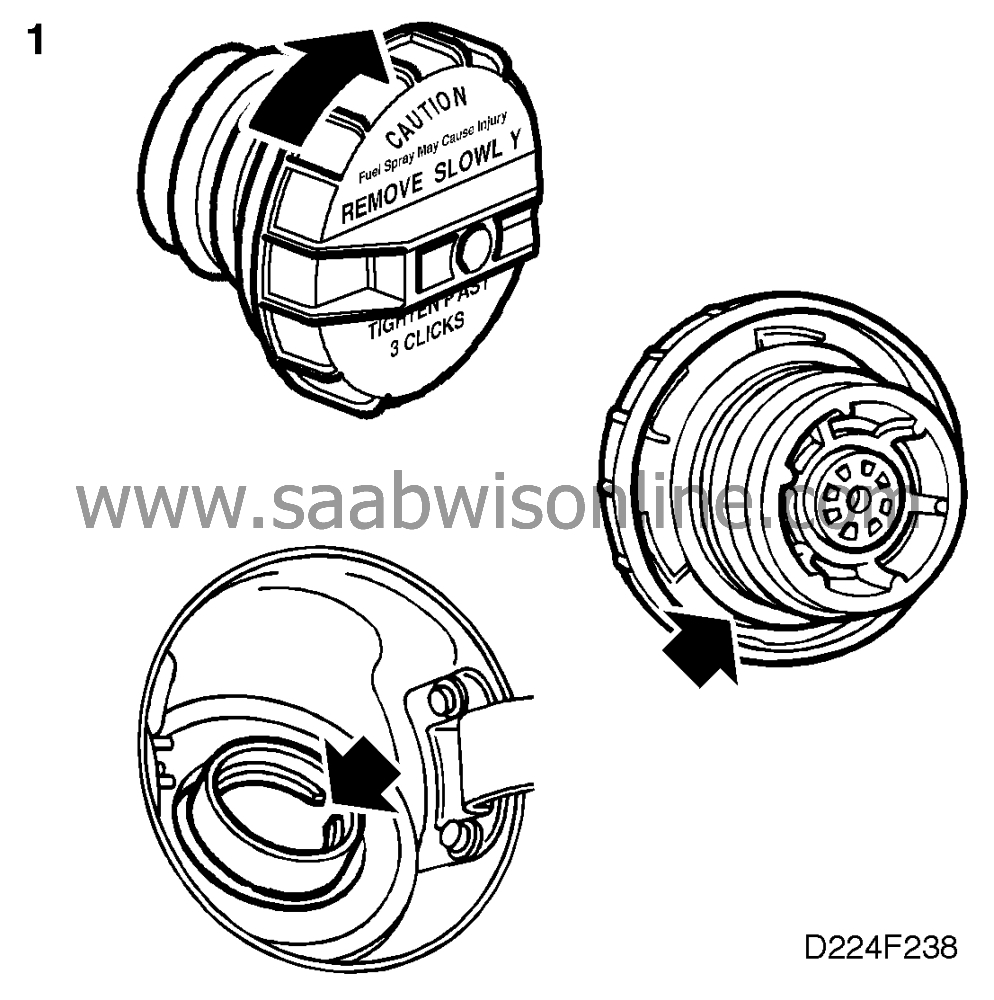
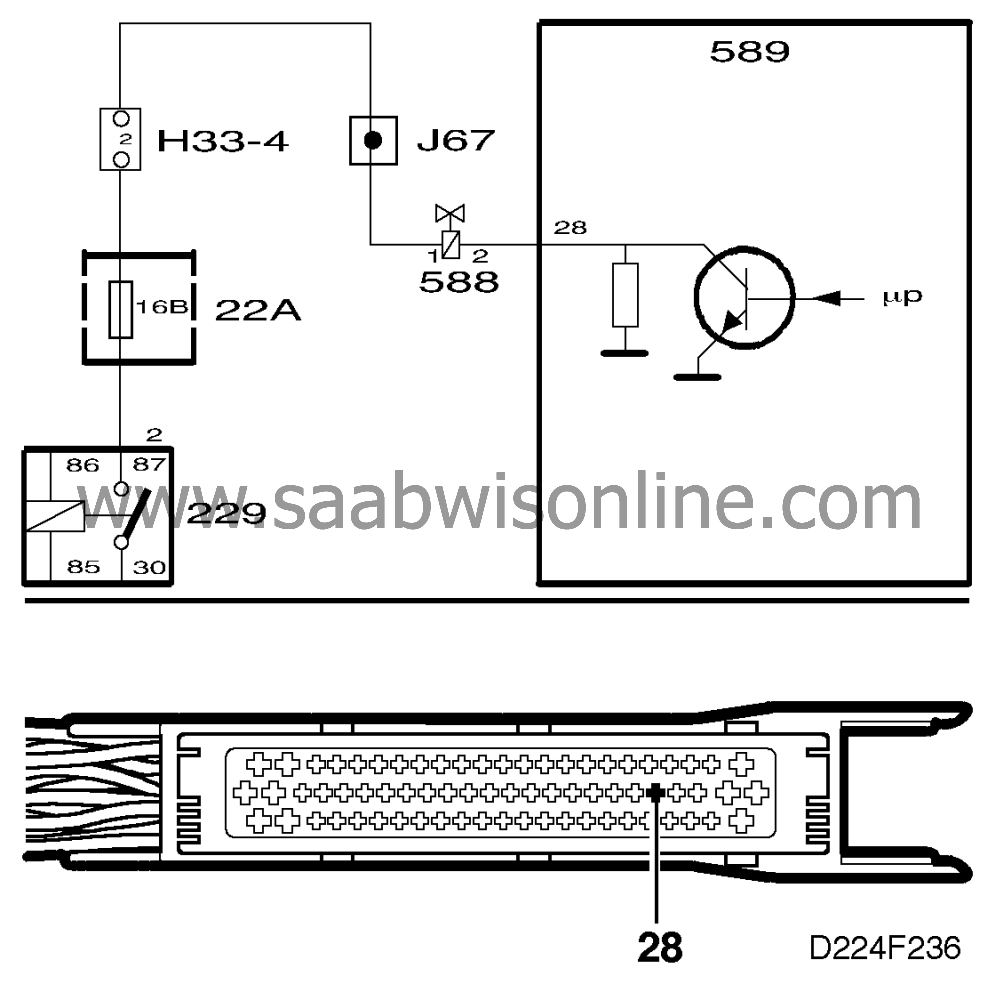
|
-
|
If possible, check whether the filler
cap was properly tightened when the fault was discovered.
|
|
-
|
Check whether the filler cap is
properly tightened.
|
|
-
|
Check the filler cap's seal
and sealing surfaces
|
Is the fuel filler cap OK?
Continue with point 2.
Rectify the fault and proceed to point 5.
2. Check the fuel leakage
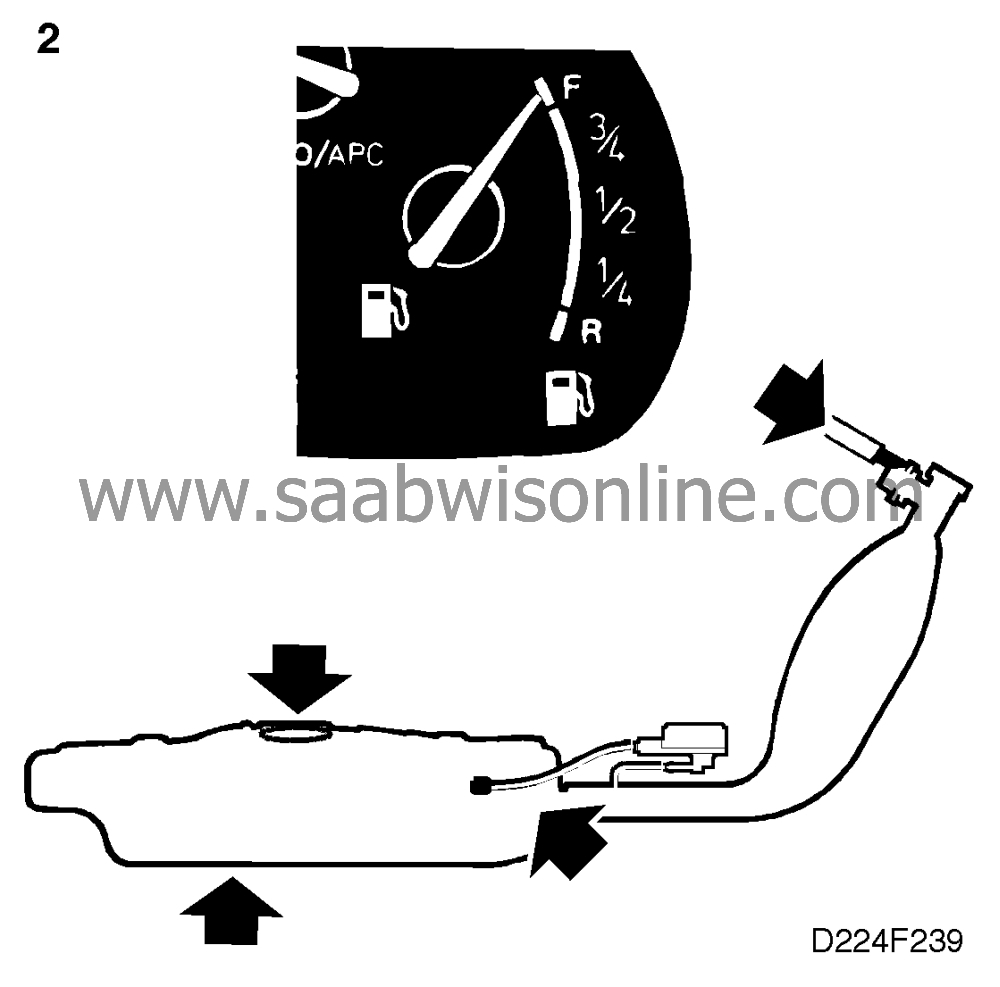
|
-
|
Fill the tank with fuel right up to the
top of the filler pipe.
|
|
-
|
Check visually whether any fuel
leaks out from the tank, filler pipe or breather pipe.
|
Any leakage?
Rectify the fault and proceed to point 5.
Continue with point 3.
3. Check the purge valve
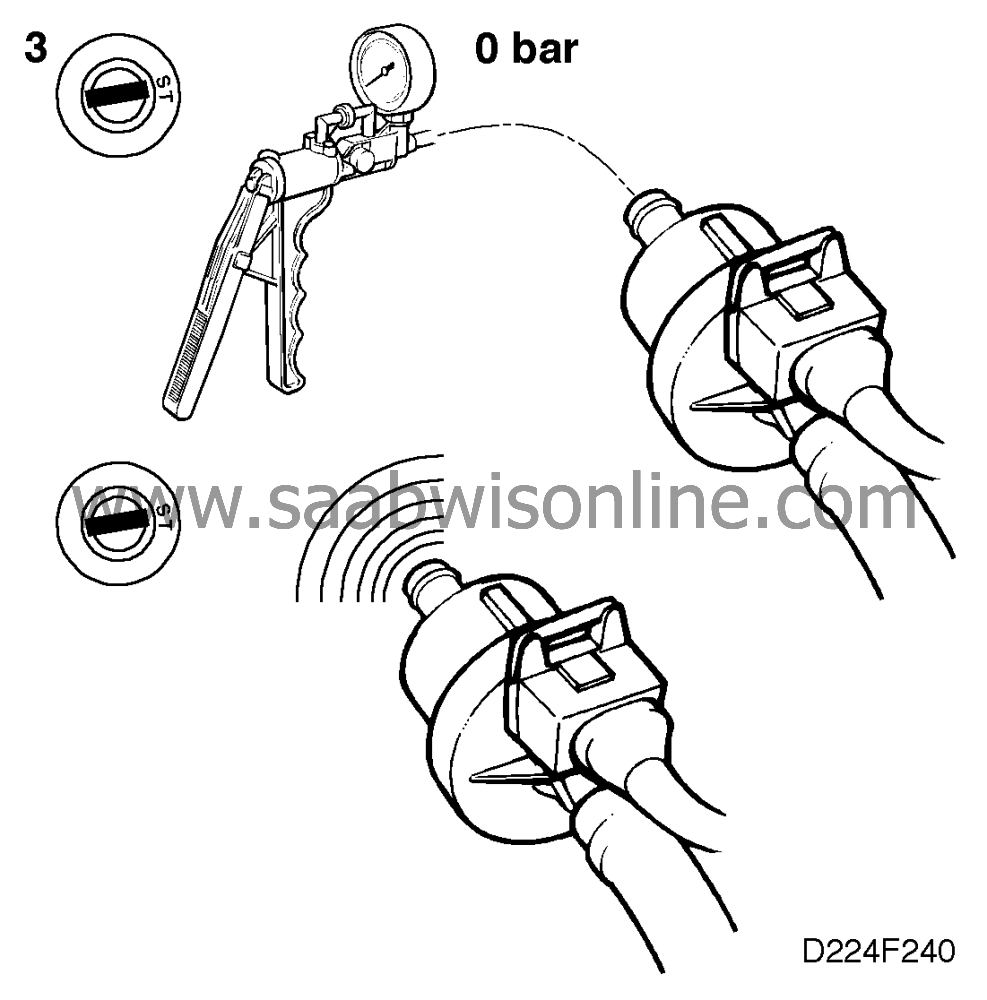
|
-
|
Check that the purge valve is
closed when not supplied with current and opens when supplied with
current.
|
Is the thermostat OK?
Continue with point 4.
Change the valve and proceed to point 5.
4. Check the purge valve
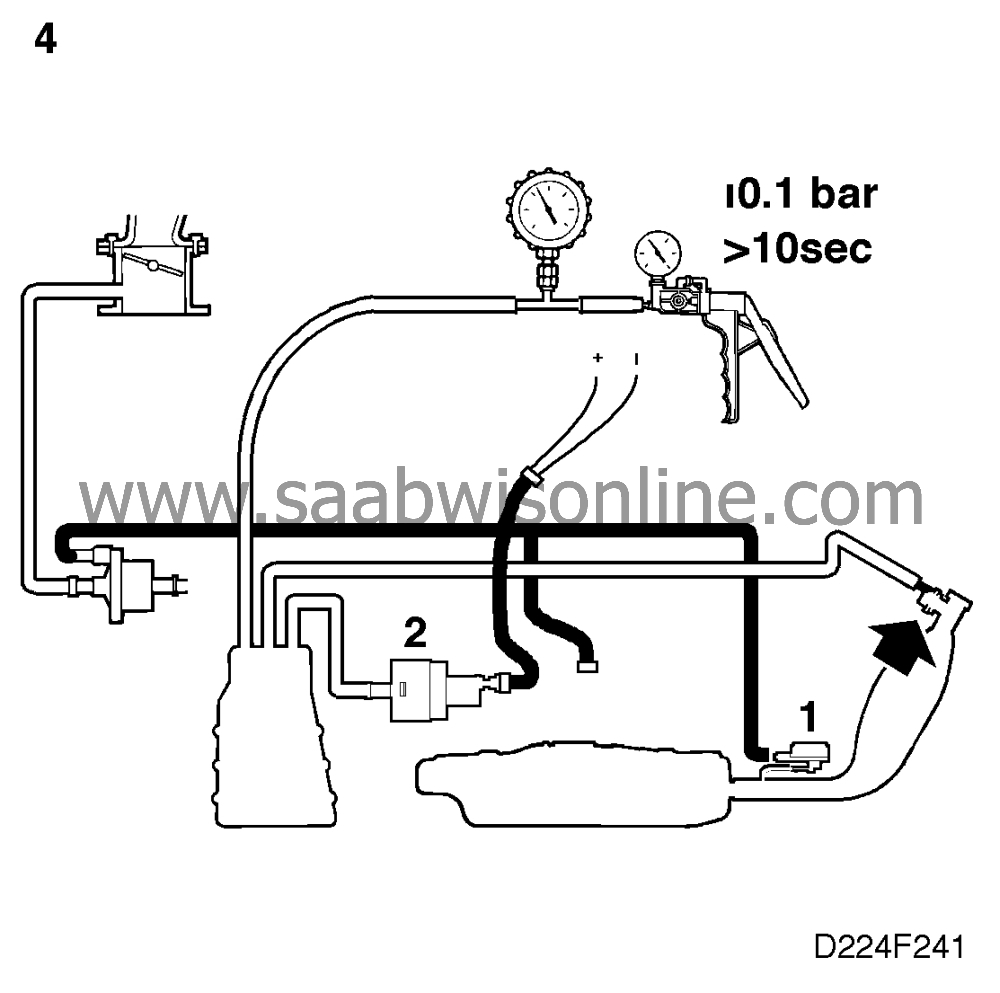
|
-
|
Ignition switch in the OFF
position.
|
|
-
|
Unplug the connector from the
evaporative emission canister's shut-off valve.
|
|
-
|
Connect the shut-off valve (male
connector) to the battery
|
|
-
|
Connect a pressure/vacuum pump
and pressure gauge to the evaporative emission canister's hose.
|
|
-
|
Remove the filler cap and close off
the rollover valve hole.
|
|
-
|
Using the pressure/vacuum pump,
lower the pressure to -0,1 bar.
|
The pressure should not visibly rise for 10 seconds.
Does the pressure rise?
The leakage has been traced to the evaporative emission canister, including
the lines connected to it, or the shut-off valve.
To check the electrical operation of the shut-off valve, use the ISAT scan tool and
activate the appropriate function. Rectify the fault and proceed to point 5.
Change the filler cap and continue with point 5.
5. Final check:
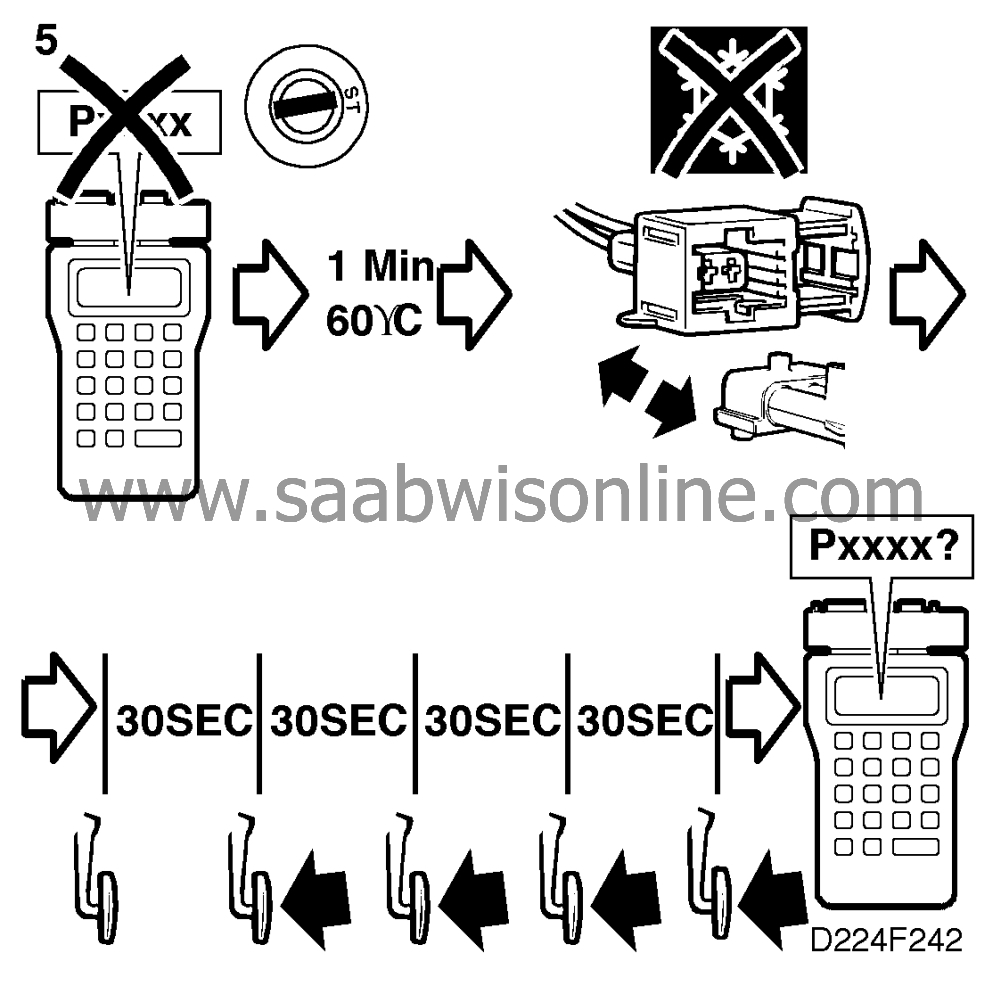
|
-
|
Clear the diagnostic trouble
code.
|
|
-
|
Perform a driving
cycle:
|
|
|
•
|
Ignition switch in ON position, A/C
switched off and temperature sensor unplugged from the ICE so that the radiator fan runs
continuously
|
|
|
•
|
Start the engine and run it at idling speed until the temperature of the coolant
rises above 60°C (140°F), or for at least 1 minute.
|
|
|
•
|
Depress the accelerator a second or two and then run the engine at idling speed
for 30 seconds. Repeat three times.
|
|
-
|
Evaluation of the driving
cycle:
|
|
-
|
Connect an ISAT scan
tool.
|
|
-
|
Select
"DIAGNOSTIC STATUS".
|
Does the ISAT scan tool show "NOT READY"?
Repeat the driving cycle.
Check whether the diagnostic trouble code has recurred.
Has the diagnostic trouble code recurred?
Proceed to
 .
.
The remedial measure taken was correct.
|
-
|
Connect the temperature
sensor to the ICE.
|
|
-
|
Clear the diagnostic trouble code
for the temperature sensor in the ICE.
|










